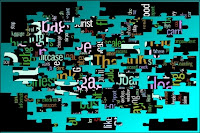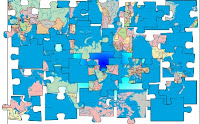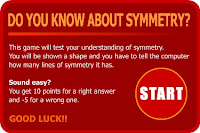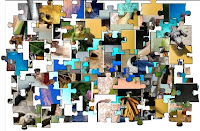What is the meaning of prehistory? We can define prehistory as the period of human development during the time before the discovery of writing.
However, before we can understand history, it is essential to understand our dating system. The global calendar in use today is based on the Gregorian calendar, named after Pope Gregory XIII.
AD comes from the
Medieval Latin term 'Anno Domini', translated as 'In the year of the Lord'. Traditionally, AD is written before the year (AD 587), although it is becoming increasingly common to see it written after it (587 AD). AD refers to the years following the birth of Jesus Christ.
BC, however, comes from English: Before Christ. (They enjoy
confusing us, don't they?) BC is always written after the year number (2500 BC), and refers to the years before the birth of Christ.
BCE stands for Before the Common
Era or Before the Christian Era.
CE stands for the Common Era or the Christian Era.
To answer an often-asked question, there is no year 0. AD 1 (or 1 CE) immediately follows 1 BC (or 1 BCE).
To complicate matters
slightly, and to answer yet another common question, Jesus Christ wasn't born at precisely the time when 1 BC becomes AD 1. In fact, the time of his birth is almost impossible to predict with
certainty. Any time between 7 BC and 1 BC is possible, but 6 BC is generally accepted to be the most
accurate guess.
Another abbreviation, BP, is also sometimes used. BP stands for 'Before Present'. In other words, 12,010 BP means twelve thousand and ten years ago, which is the equivalent to 10,000 BC (we subtract the present year from 12,010).
Now that we understand how to label years, let's go back to the concept of prehistory.
Prehistory is
broadly divided into the Stone Age and the Metal Age.
The Stone Age is further divided into the Old Stone Age (Paleolithic), the Middle Stone Age (Mesolithic), and the New Stone Age (Neolithic).
The Metal Age is divided into the Bronze Age and the Iron Age.
For the purpose of this post, we will classify prehistory into three groups:
The Paleolithic Age (beginning from about 2 million years ago)
The Neolithic Age (beginning around 9000 BC) and
The Metal Age (beginning about 5000 BC)
The
Paleolithic humans made stone tools and survived by
gathering plants and hunting animals. They were nomadic people. Nomadic means that they moved from place to place following the animals that they needed to hunt, and looking for plants they could eat. They slept in caves or in the open. Sometimes, they
built wooden huts. They learned to make fires. They also started to decorate their caves with paintings.
The
Neolithic human beings discovered agriculture and learned to
domesticate animals, such as horses, goats and sheep. The first plants they cultivated were cereals: wheat,
corn and rice. They stopped moving from place to place and started to live in villages, usually next to rivers.
In the Metal Age, the human beings made the first metal objects. First, they used copper, then they learned to use bronze, and much later, iron.
They made
weapons, jewellery, and
statues. The
wheel, the
sail and the
plough were invented. They started making monuments with big blocks of stone (megaliths).
Now, try to classify the objects in the quiz in the correct age group: the Paleolithic Age, the Neolithic Age, or the Metal Age.
To start the quiz, click on the image.
Teachers, please take note: some of my quizzes, like this one, for example, ask for an email. If an email is provided, the results get sent automatically to it. This allows you to grade/check your students' progress. If you haven't got an email for this purpose, I'd suggest creating one for this purpose.





























